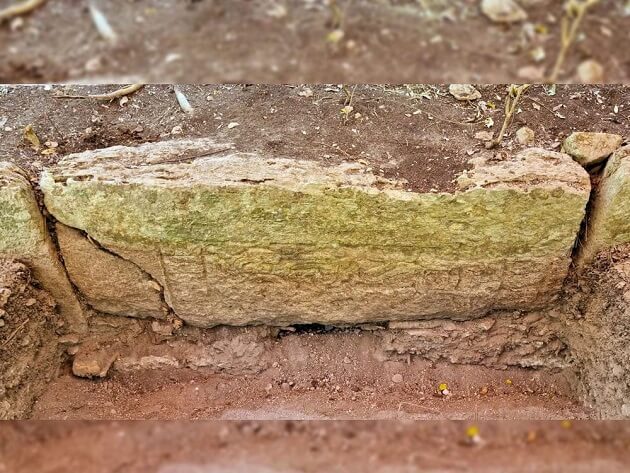By: Sonja Anderson | Smithsonian
Researchers from Mexico’s National Institute of Anthropology and History (INAH) have discovered the remains of a centuries-old Maya city in the Balamkú ecological reserve on the Yucatán Peninsula.
In a statement, lead archaeologist Ivan Šprajc says the settlement probably served as an important regional centre during the Maya Classic period, which spanned 250 to 1000 C.E. The team named the newly discovered ruins Ocomtún—“stone column” in Yucatec Mayan—in honour of the many columns found at the site.
“The biggest surprise turned out to be the site located on a ‘peninsula’ of high ground, surrounded by extensive wetlands,” says Šprajc in the statement, per Google Translate. “Its monumental nucleus covers more than [123 acres] and has various large buildings, including several pyramidal structures [nearly 50 feet] high.”
Maya builders often centred their cities around pyramids like the ones found in Ocomtún, with the structures fulfilling religious purposes. Large, climbable pyramids like those at Uxmal and Chichén Itzá were typically used for spiritual training and rituals, including sacrifices, reported Teo Spengler for USA Today in 2018. Others weren’t meant to be touched, instead serving as sacred ornaments and convenient landmarks for navigation. The stone cylinders for which Ocomtún is named likely formed part of the entrances to upper rooms in the city’s buildings.
Archaeologists Discover 3,000-Year-Old Sword In Germany So Well Preserved ‘It Almost Still Shines’
In addition to pyramids and columns, the statement notes that Šprajc’s team found ceramics, three plazas, a complex made up of “low and elongated structures arranged almost in concentric circles,” and a ballgame court.
The Maya, the Aztecs and many other Mesoamerican civilizations played a game that featured balls made from natural rubber. “A source of sport and entertainment in ancient Mesoamerica, [the ballgame] also had important symbolic associations,” representing agricultural fertility or “a battle between day and night,” wrote Caitlin C. Earley in a 2017 essay for the Metropolitan Museum of Art.
Researchers discovered Ocomtún with support from an INAH project that seeks to survey the largely unexplored, jungle-covered centre of the Mexican state of Campeche. In March, light detection and ranging (lidar) scans of the area detected “numerous concentrations of pre-Hispanic structures,” according to the statement. The aerial images prompted Šprajc and his colleagues to take a closer look at a “stretch of land larger than Luxembourg,” reports Yucatán magazine. Closer to the La Rigueña River, the team found similar structures, including central altars perhaps used for communal rituals.
Architectural elements suggest Ocumtún’s decline coincided with the broader collapse of Maya civilization between 800 and 1000 C.E. During that period, “dozens of core urban areas in the lowlands of the Yucatán Peninsula … went from bustling cities to abandoned ruins,” wrote Joseph Stromberg for Smithsonian Magazine in 2012.
As Šprajc says in the statement, alterations in the Ocumtún landscape reflect “ideological and population changes in times of crises that, finally, by the tenth century, led to the collapse of the complex sociopolitical organization and the drastic demographic decline in the Maya Central Lowlands.”
* * *
NEXT UP!
Archaeologists Stunned As 2,000 Year Old Skull Bound By Metal Evidence of Ancient Surgery
The elongated skull fused together with metal is currently held by the SKELETONS: Museum of Osteology in Oklahoma, USA. The museum hailed the discovery as one of its “most interesting” pieces. The skull is believed to have come from a Peruvian warrior and that it had been damaged in battle around 200 years ago. It is thought that Peruvian surgeons conducted a miraculous surgery on the warriors’ skull when he returned from battle seriously injured.
The museum said on Facebook that the elongation of its structure was “achieved through head binding beginning at a very young age”.
This is a practice that showed social status.
* * *
READ MORE: Were The Mayans Visited By Ancient Astronauts?
Read more on Mayan History: A Mysterious Mayan Calendar Stumped Scientists For Decades: “A New Study Has Cosmic Answers”
Liked it? Take a second to support Collective Spark.
We’d love to hear from you! If you have a comment about this article or if you have a tip for a future Collective Spark Story please let us know below in the comment section.

